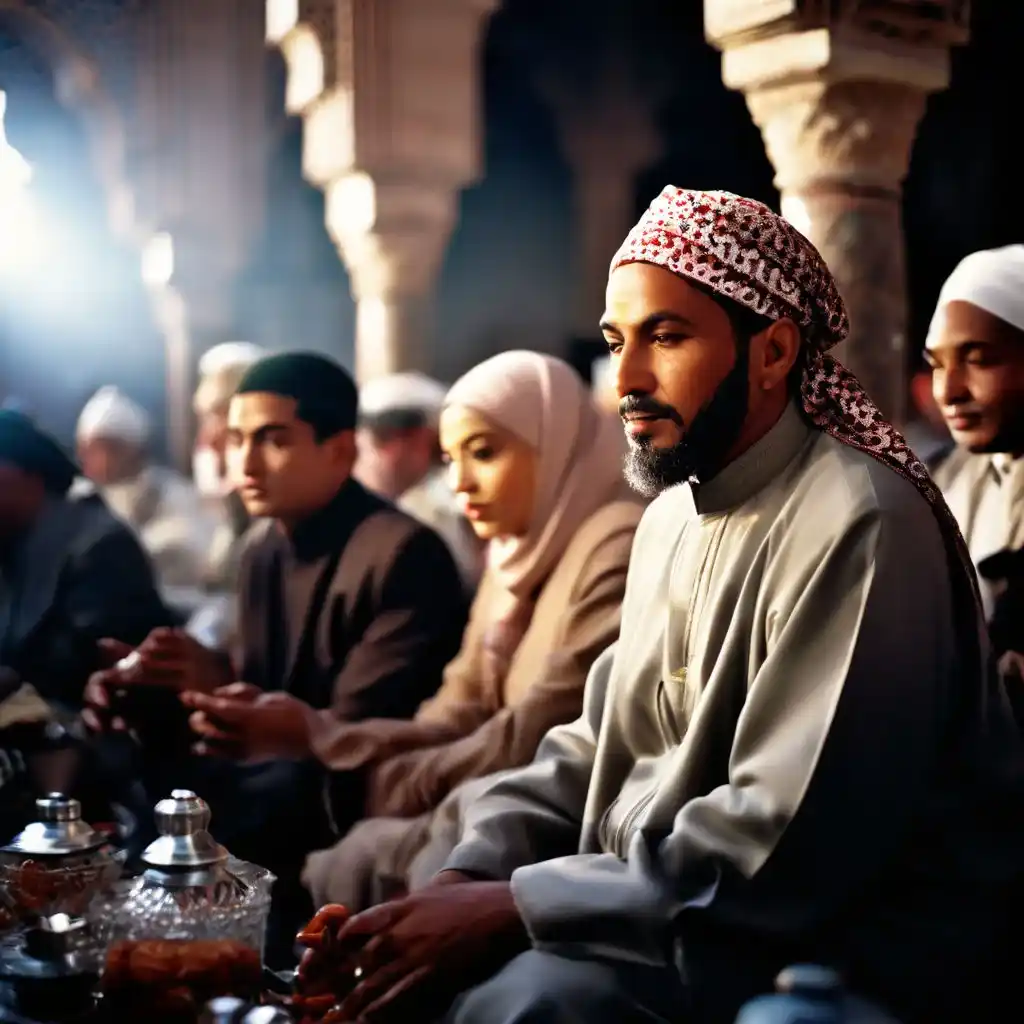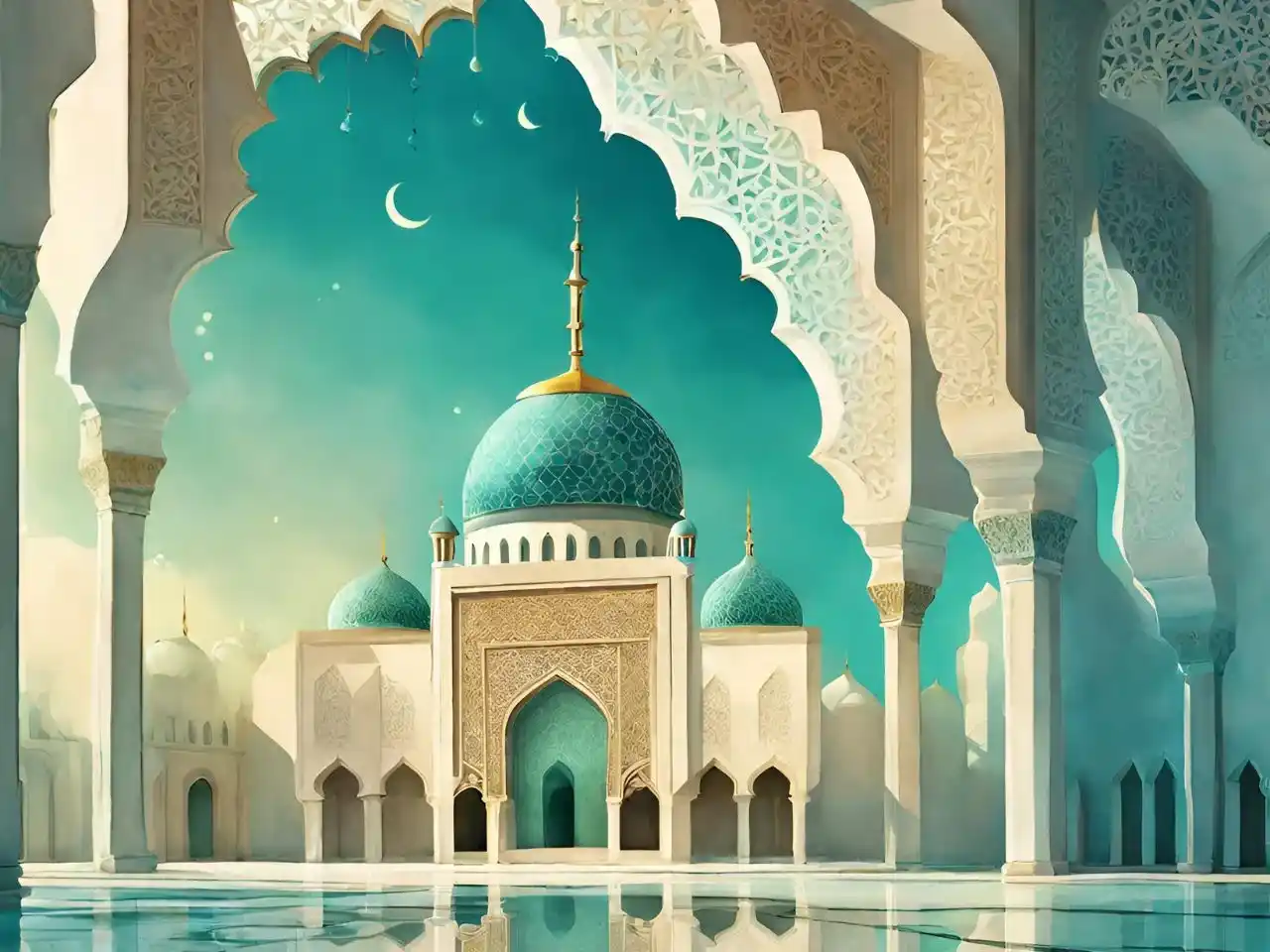Ramadan is an important period in Morocco’s calendar, marked by various customs and traditions that set it apart. Fasting is observed from dawn until dusk throughout Ramadan; many locals also join friends or participate in community iftar meals hosted at friends’ homes or events during this month-long holiday.
Ftoor is an elaborate family meal to break the fast. Moroccan families usually prepare their ftoor feast by setting out dates, milk, juice, Harira soup, Moroccan sweets, hard-boiled eggs and tagines on the table for guests to feast upon.
Exploring Ramadan Practices
Fasting during Ramadan is one of the Five Pillars of Islam and considered a core practice by all Muslims around the world. Moroccans take this month seriously and visiting during it can provide insight into daily life as well as an in-depth knowledge of this faith tradition.
A typical day of fasting begins with the sound of a town crier blowing their horn at dawn to wake families for suhoor, an early breakfast consisting of dates, milk, and other nutritious food sources that helps prepare the body for an arduous fasting experience. Families also begin cooking and baking ahead of time for iftar and ftour meals with traditional cookies and cakes such as almond briouats, chebakia or sellou prepared in advance by their family members and trusted tailors who ensure they look their best throughout this religious season.
Once the sun goes down, zowaka, an air raid siren heard across town, sounds to signal it is time for breaking fast with an exquisite iftar or ftour feast. Families usually gather around tables set with dates, milk, soup and various pastries to share an enjoyable break from hunger – an evening which usually lasts several hours as everyone sits together enjoying themselves while sharing memories while eating together.
On most days during the day, it’s not unusual to witness people dressed more conservatively than normal and covering any exposed skin in public, which is seen as highly respectable and polite gesture that signals religious devotion on both men and women’s parts. After sunset, most will visit their local mosque for tarawih or tahajjud prayers as part of an act of devotion and respect.
Non-Muslim observers might find it unnerving, yet this practice should not be taken lightly. Moroccans take great pride in respecting and treating those observing Ramadan with kindness.
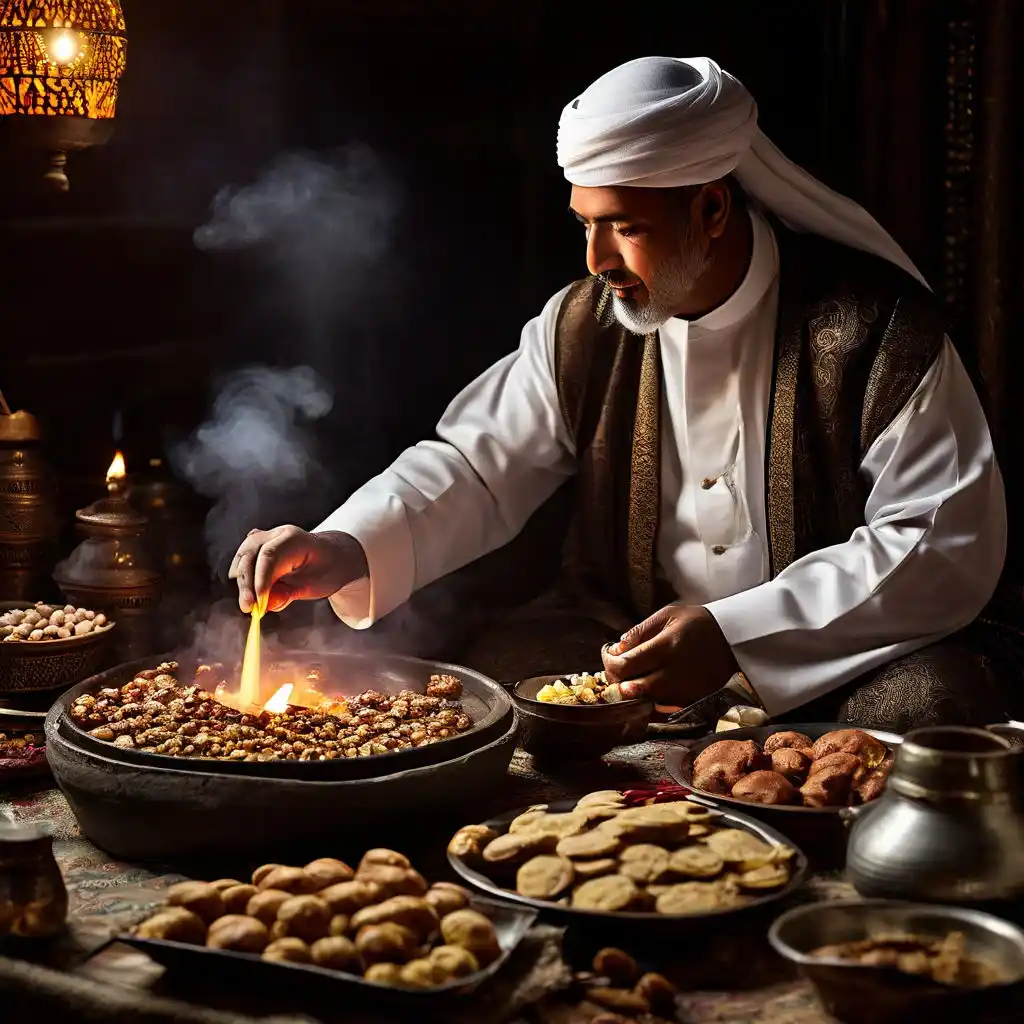
Traditional Ramadan Foods
Moroccans typically consume light foods during the day such as salad, yogurt and dates; in contrast, their evening meals tend to be an extravagant feast!
At sunset, Moroccan families gather to eat an evening meal known as iftar to break their fast and replenish energy stores after fasting all day long. Harira tomato soup and Moroccan pastries are popular choices served during iftar, along with various sweet and savory desserts like cookies, baklava and semolina-based pastries.
An Iftar meal provides a wonderful opportunity for family and friends to come together, especially if they don’t get to see each other often during the year. Many take this time as an opportunity to visit neighbors and relatives whom they may have not seen often enough during that year.
As part of Ramadan traditions, people often give charitable donations to those less fortunate as a sign of respect for those struggling to survive in society. This gesture demonstrates your respect and solidarity towards all.
People tend to dress more modestly during Ramadan as part of their religious devotion, and to show politeness towards locals by covering any bare skin when walking in public. Covering up is seen as a gesture that locals appreciate.
Due to Morocco’s vibrant mix of cultures, each region boasts distinct Ramadan traditions. Iftars often reflect local cuisine from each area and set tables filled with dishes specific to that region.
An average Moroccan Iftar includes traditional Moroccan food such as Khrayef/msemen flatbread resembling a sandwich in taste and texture; Beghrir, closer to crepe-like bread that melts in your mouth when served with traditional butter and honey syrup; these savory dishes are then followed by an array of sweet desserts such as Chebakia made of triangular pastry filled with traditional almond paste flavoured with orange blossom water, deep-fried and briefly submerged in syrup; sellou or another cookie made up of puffed sesame seeds.
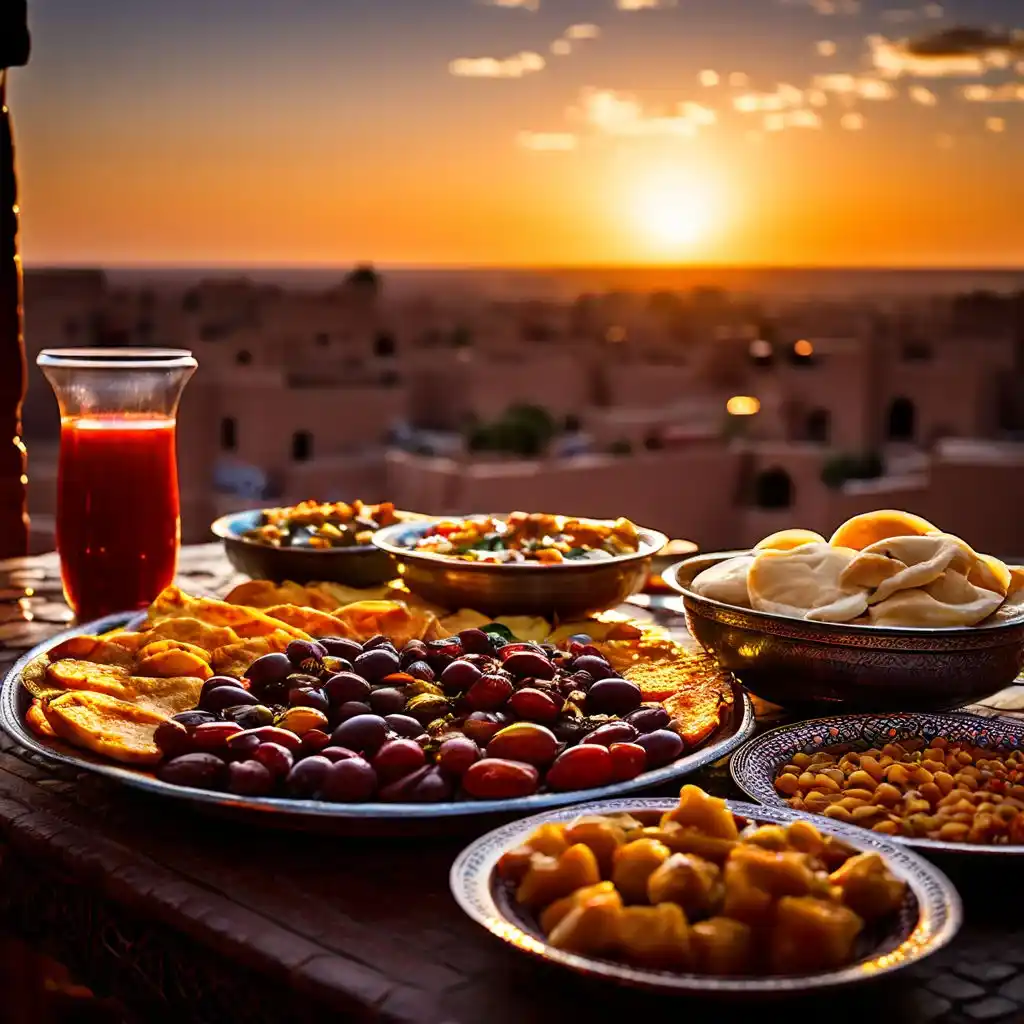
Festive Atmosphere in Moroccan Cities
Even though Muslims do not consume any food or beverage during daylight hours, from dawn to sunset, Moroccan cities and towns still maintain vibrant social lives. Streets are illuminated with lights; markets offer delicious treats; cafes create festive ambiences – there is much going on all around!
As soon as the sun goes down and fasting ends, Moroccans come together for an evening feast known as iftar, also called ftoor. It is a large family meal featuring both sweet and savory foods; dates and milk are perennially popular choices while hearty lentil-tomato soup known as harira is said to restore people after fasting all day long. Other common offerings at an iftar include cookies made with honey and sesame; luqaimat are deep-fried doughnut balls covered in either honey or date molasses; while Yemeni banana bread pudding is also commonplace iftar staples.
At Iftars, families often invite friends over. An Iftar can last anywhere between one and two hours as guests sit around the table eating, listening to Quoran readings or Tarab Andaloussi (Moroccan Classic Music), sharing stories, and exchanging gifts among themselves. Many families also take this chance to give gifts to their children during this meal.
Moroccans take great pleasure in watching the evening news with family members and friends during iftar, attending extra night prayers known as tarawih and tahajjud, and celebrating Laylat al-Qadr (the 27th night of Ramadan). On this night special dinners are hosted for family gatherings as well as unveiling new prayer attire.
During Ramadan, charities and volunteers often distribute free Ftoor meals to those in need – particularly important in rural areas with large poor populations.
Ramadan in Morocco is traditionally celebrated religiously, yet has also become an opportunity for families and friends to come together and honor their heritage. Ramadan traditions draw upon elements from various sources – Amazighs, Andalusians, Arabs and Jews all adding their unique influences for an exciting festival experience that’s uniquely Moroccan.
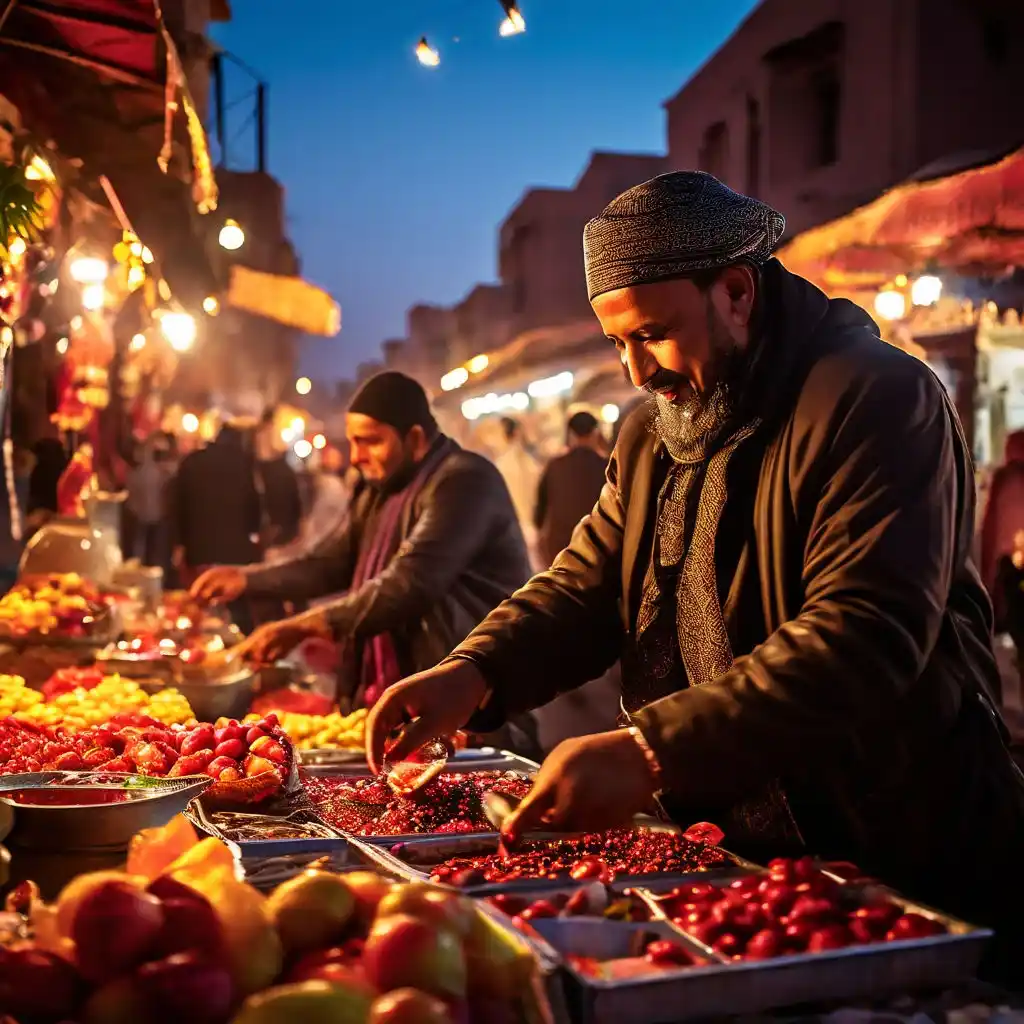
Visiting Mosques during Ramadan
Muslim communities place particular emphasis on charitable acts and acts of service during Ramadan. Residents visit mosques for prayers and socialization after breaking fast; it is also essential that Moroccan customs be observed, with women covering their shoulders while men wearing long trousers or skirts; visitors should avoid making loud noises or talking during prayers.
Moroccans observe Ramadan according to their own schedule; many stores close early each morning. Therefore, it is best to visit major attractions early and return later for a more relaxing experience. Every morning starts with Suhoor (break-the-fast meal). Muslims gather together at this special meal and share homemade food or samosas during this celebration of Islam’s month-long fast.
At sunset, it’s time for iftar, the evening break-fast meal in Morocco. A variety of Moroccan dishes such as soup called harira and shebakiya pastry are typically offered, alongside dates, fresh fruit and beverages like water and lemonade as accompaniments. Eating something light yet nutritious post fasting month is important for both mind and body alike – giving your body fuel after not eating much is key to its well-being!
At night, the Zowaka siren announces it is time for prayer, drawing people out from all across the country to their local mosque for prayer services and an iftar dinner afterwards.
Muslim families also take time during this holy month to visit each other and exchange gifts; many Moroccans give their children new clothes and treats as a mark of Eid al-Fitr, which marks the end of fasting month.
Eid al-Fitr is celebrated annually and determined by the sighting of the new moon, lasting three days and marked by Muslim worldwide celebrations commemorating Abraham’s sacrifice of his son as well as family celebrations, generous giving, charity efforts and joyous times of forgiveness and peace.
